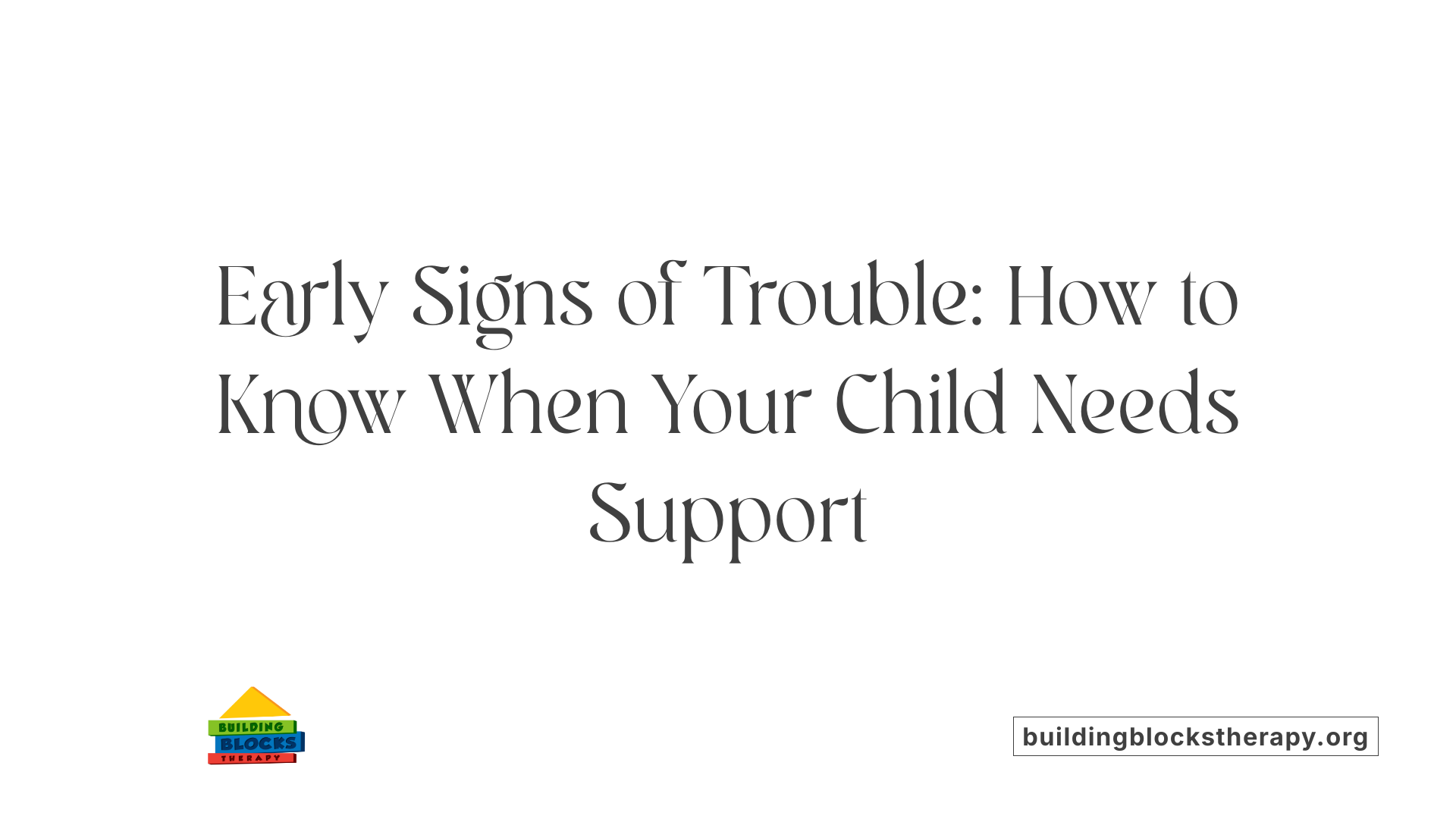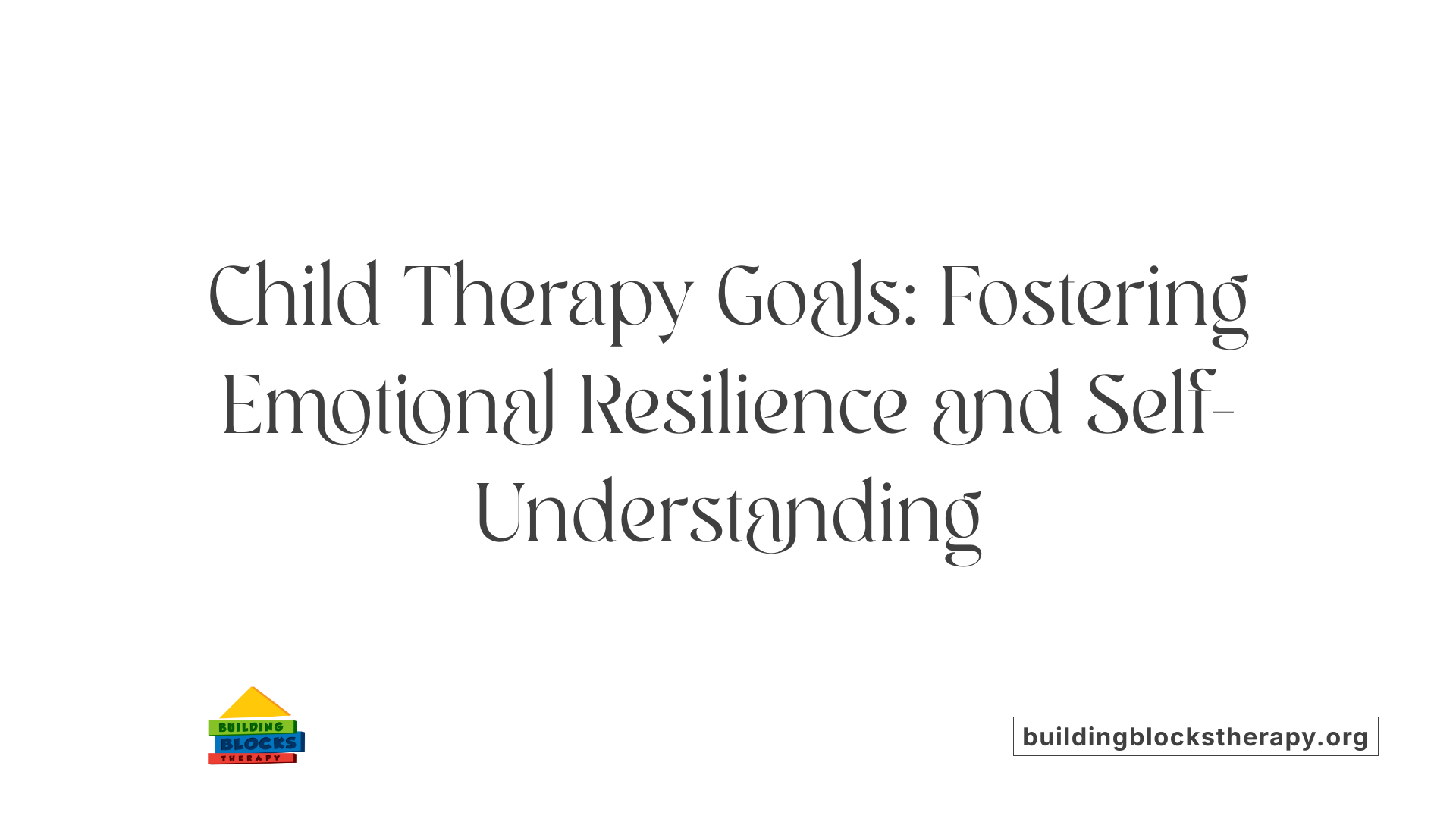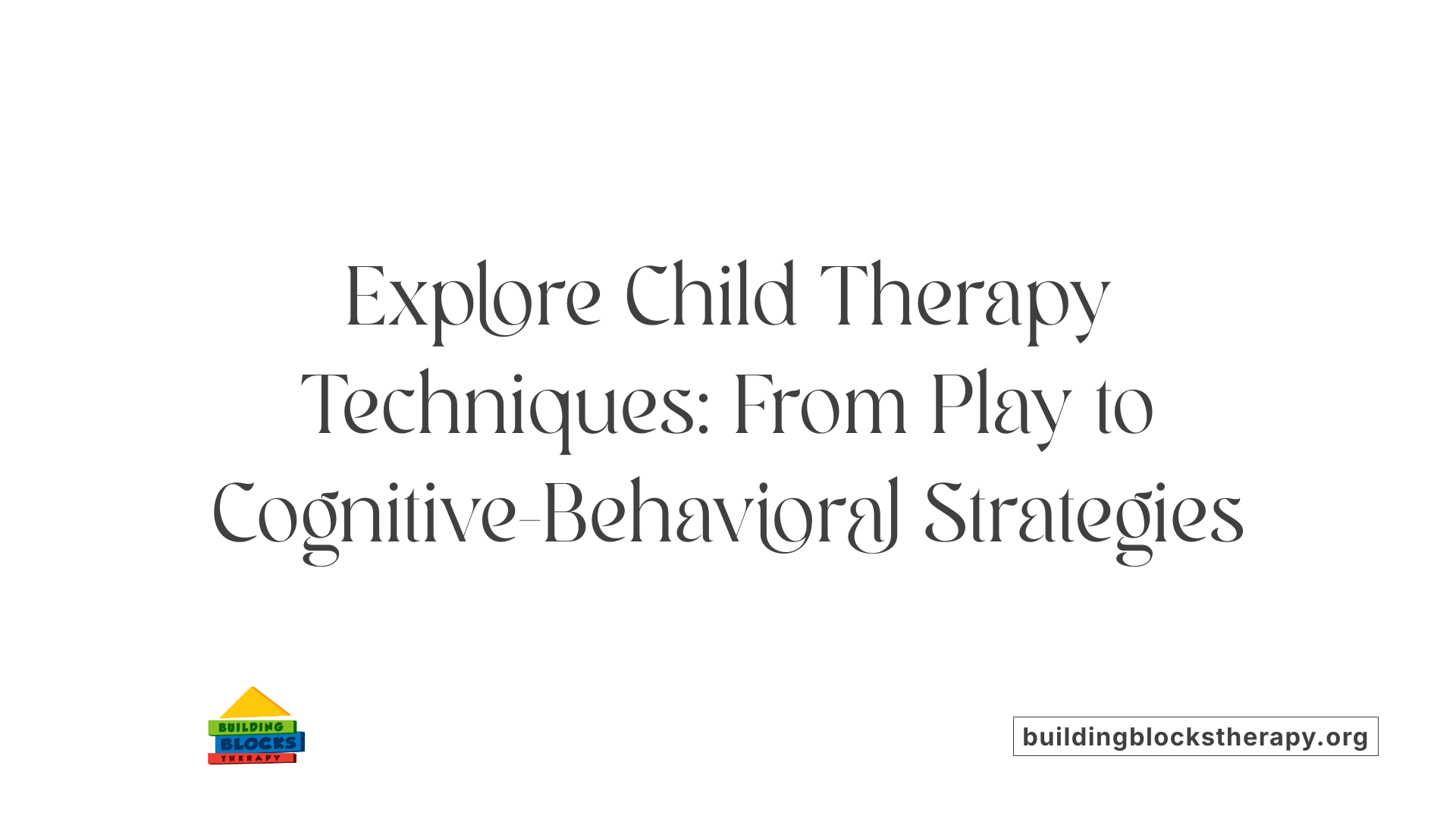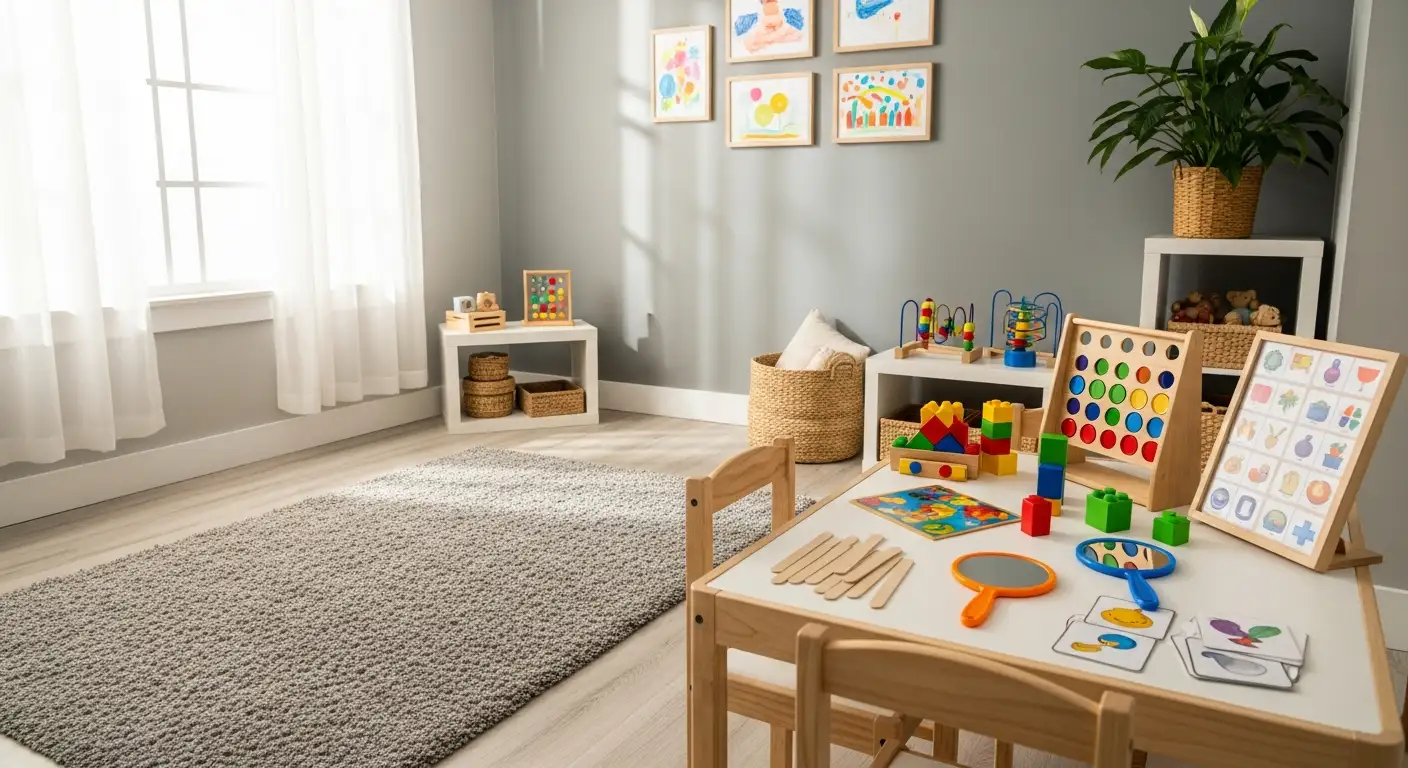Understanding the Role and Impact of Child Therapy
Child therapy offers a vital pathway for young individuals facing emotional, behavioral, or psychological hurdles. Early intervention not only alleviates current struggles but also fosters resilience, emotional regulation, and healthier relationships. This comprehensive guide explores how various therapeutic approaches help children overcome challenges, with insights into signs indicating the need for support, effective techniques, and how parents can amplify therapy outcomes.
Recognizing When a Child Might Need Therapy

What are the signs that indicate a child might benefit from therapy?
Watching for certain signs can help parents and caregivers identify when a child may need professional support. Persistent emotional difficulties such as prolonged sadness, excessive worries, or mood swings that interfere with daily routines are common indicators. If a child frequently displays behavioral problems like tantrums, defiance, aggression, or self-harming acts, especially if these behaviors appear suddenly, it is often a sign that they may be struggling.
Regressions in behavior, such as bedwetting, separation anxiety, or a loss of skills they previously mastered, can point to underlying stress or trauma. These regressions are particularly concerning when they occur alongside other challenges. Social withdrawal, avoidance of peer activities, or difficulty in communicating feelings may reflect social anxiety or other emotional difficulties.
In addition, noticeable changes in sleep patterns, eating habits, or school performance can signal emotional distress. Expressions of hopelessness, intense anger, or difficulty managing emotions also serve as strong warning signs. These behaviors and feelings often indicate that a child could benefit from assessment by a mental health professional to determine appropriate treatment options.
Early recognition and intervention can greatly improve a child's resilience and emotional well-being, preventing further difficulties and fostering healthier development.
How Therapy Facilitates Emotional and Behavioral Transformation
How does therapy help children overcome emotional and behavioral challenges?
Child therapy creates a safe and supportive environment where children feel comfortable exploring their feelings and experiences. This setting helps them understand and express emotions they might not have been able to articulate before. Through various techniques such as play therapy, art therapy, and cognitive-behavioral therapy (CBT), children learn to identify negative thought patterns and replace them with positive, realistic ones. These approaches teach coping skills for managing stress, anxiety, and behavioral difficulties.
Therapy also focuses on building social skills and boosting self-esteem, essential for healthy relationships at home and school. Parents and caregivers participate in the process, reinforcing strategies and supporting emotional growth outside therapy sessions. Early intervention is especially crucial because it addresses issues before they deepen, reducing the risk of long-term mental health problems. Children recovering from trauma, dealing with learning difficulties, or exhibiting disruptive behaviors benefit significantly from these tailored therapeutic approaches.
Overall, therapy not only alleviates current difficulties but also equips children with lifelong skills for emotional regulation and resilience. It supports their overall development and fosters stronger family bonds, setting a foundation for healthier future interactions and well-being.
The Structure and Goals of Child Therapy

What is the process and goal of child therapy?
Child therapy begins with an initial assessment conducted by a trained mental health professional who specializes in working with children. During this phase, the therapist collects information about the child's emotional, behavioral, and social background, often involving discussions with parents or caregivers. The main goal is to establish clear treatment objectives tailored to the child's specific needs.
Following the assessment, the therapist works to build a trusting relationship with the child. This involves creating a safe, welcoming environment where the child feels comfortable expressing thoughts and feelings without judgment. Building rapport is essential because it encourages openness, which is vital for meaningful progress.
Therapeutic interventions are then tailored to suit the child's developmental level and specific challenges. Techniques such as play therapy, art therapy, or storytelling are commonly used, helping children communicate complex emotions in ways that align with their natural modes of expression. The overarching aim is to help the child develop emotional vocabulary, so they can better identify and articulate their feelings.
Throughout the therapy process, progress is regularly tracked and evaluated. The therapist may include activities or exercises designed to measure changes in behavior, emotional regulation, and social skills. If necessary, treatment strategies are adjusted to enhance effectiveness.
The ultimate goal of child therapy is to foster emotional growth and resilience. It aims to improve the child's overall functioning in home, school, and social settings. By establishing a trusting relationship, developing coping strategies, and addressing specific emotional or behavioral issues, therapy helps children attain a sense of safety, acceptance, and self-understanding. These positive changes support healthier development and better long-term mental health outcomes.
Exploring the Diverse Techniques and Approaches in Child Therapy

What are common types and techniques of child therapy, including play therapy, behavioral therapy, mindfulness, and DBT?
Child therapy employs a variety of methods tailored to meet the different developmental needs and emotional challenges children face. Understanding these techniques can help parents and caregivers choose the most suitable approach for their child's unique situation.
Play therapy is one of the most recognizable forms of therapy for children aged 3 to 12. It uses toys, art supplies, storytelling, role-playing, and games to help children express feelings that may be difficult to articulate verbally. Play therapy provides a safe, non-threatening environment where children can process trauma, manage anxiety, build social skills, and develop problem-solving abilities. Therapists may adopt directive or non-directive roles, depending on the child's needs.
Behavioral therapy focuses on modifying specific behaviors by identifying triggers and applying reinforcement strategies. It is effective for conditions like ADHD, oppositional defiant disorder, and disruptive behaviors. Techniques include positive reinforcement, structured routines, modeling, role-playing, and the use of visual schedules. Family involvement is often essential to reinforce behavioral changes at home.
Cognitive-behavioral therapy (CBT) is designed to help children recognize and challenge distorted thoughts that affect their mood and actions. Through engaging exercises, storytelling, and activities, children learn to develop healthier thinking patterns and coping mechanisms. CBT sessions usually span 16 to 20 weeks and may involve parents or caregivers to support skill application outside the therapy sessions.
Mindfulness and Dialectical Behavior Therapy (DBT) are focused on enhancing emotional regulation, distress tolerance, and mindfulness skills. These techniques teach children to observe their feelings non-judgmentally, manage overwhelming emotions, and develop resilience. Programs often include breathing exercises, body scans, and visualization, fostering long-term emotional health.
Family therapy and parent–child interaction therapy (PCIT) aim to improve communication, attachment, and family dynamics. They involve working with multiple family members to address behavioral issues, emotional conflicts, and parenting challenges. Techniques include role-playing, coaching, and family meetings.
Group therapy provides peer support and social skills development. Children learn through shared experiences, which can be particularly helpful for social anxiety, developmental disorders, or trauma recovery.
Additional approaches include Acceptance and Commitment Therapy (ACT), which emphasizes accepting difficult emotions while committing to personal values; Eye Movement Desensitization and Reprocessing (EMDR), mainly used to treat trauma; and specialized trauma-focused therapies tailored to address complex emotional wounds.
Overall, these various therapy techniques are often used in combination depending on the child's specific condition, age, and emotional needs, providing a comprehensive framework for supporting mental health and emotional development.
Supporting Therapy Outcomes Through Parental Strategies and Self-Regulation Skills
How can parents and caregivers support therapy outcomes through parenting strategies and self-regulation skills?
Parents and caregivers hold a crucial position in the success of a child's mental health treatment. By actively engaging in parenting strategies that reinforce therapy techniques, they create a consistent and supportive environment that promotes positive change.
One of the most effective ways to support therapy is through positive reinforcement. Praising children for their efforts, successes, and the use of coping skills learned in therapy helps boost their confidence and encourages ongoing progress.
Additionally, parents can practice emotional coaching, which involves helping children recognize, understand, and manage their feelings. This approach fosters emotional regulation skills and supports the child's ability to handle stress and challenging situations.
Building a collaborative relationship with mental health professionals is essential. Open communication, sharing observations about the child's behavior, and participating in therapy sessions when appropriate can improve treatment outcomes. Being receptive to advice and actively implementing strategies recommended by therapists ensures consistency at home.
Parents should also observe and report behavioral changes or progress, providing valuable feedback to clinicians. Reinforcing learned skills daily, such as mindfulness or problem-solving techniques, helps generalize these skills across different settings.
Taking care of their own emotional well-being is vital. When parents manage stress effectively and practice self-care, they are better equipped to support their child's journey. Educating themselves about their child's challenges—through reading, support groups, or consultation—can also empower parents to be proactive participants.
Patience plays a significant role, as behavioral and emotional improvements often occur gradually. Maintaining realistic expectations and acknowledging small successes fosters a positive atmosphere that motivates the child.
In summary, nurturing a supportive, patient, and well-informed environment, coupled with ongoing collaboration with therapists, significantly enhances the effectiveness of therapy and promotes healthier development for children.
The Evidence Base and Effectiveness of Child Therapy Approaches
What is the effectiveness of various therapy approaches on children’s mental health?
Research consistently supports the use of multiple therapy techniques in improving children’s mental health. Cognitive-Behavioral Therapy (CBT), play therapy (PT), family therapy, and group therapy are among the most proven methods.
Play therapy is particularly effective for young children, using toys, games, and creative activities to help them express feelings and work through emotional or behavioral issues. Numerous studies highlight its success in reducing anxiety, depression, and behavioral problems. It allows children to communicate complex feelings non-verbally, which is crucial since they often lack the language to articulate trauma or distress.
CBT is another highly effective approach, especially for conditions like anxiety, depression, trauma, and OCD. It helps children identify negative thought patterns, challenge them, and develop healthier thinking styles. Tailoring CBT to developmental stages ensures children grasp concepts effectively, leading to significant symptom improvement.
Family therapy involves the entire family unit, focusing on enhancing communication and understanding. It’s particularly beneficial for adolescents experiencing disruptive behaviors or depression, as a supportive family environment can facilitate recovery.
Group therapy offers peer support, developing social skills and emotional regulation. It’s effective for addressing social difficulties, reducing feelings of isolation, and fostering resilience.
In summary, these therapies have shown strong empirical support. When adapted to each child’s unique needs, they can diminish symptoms, strengthen emotional regulation, and foster the development of resilience and healthy behaviors.
Empowering Children and Families for Long-Term Wellbeing
Child therapy is a powerful tool that supports emotional well-being, resilience, and social development. Early assessment and intervention are critical in addressing emotional and behavioral challenges, preventing further difficulties, and fostering healthy growth. Multiple evidence-supported approaches like CBT, play therapy, and family therapy offer tailored solutions to meet each child's unique needs. Parental involvement enhances treatment success, with strategies that reinforce positive change at home. Ultimately, understanding, patience, and professional support can help children navigate their emotional worlds, build confidence, and develop lifelong coping skills—ensuring healthier, happier futures.
References
- Treating Children's Mental Health with Therapy - CDC
- Behavioral Therapies for Behavioral Problems in Children
- Child Mental Health Therapy Types and Applications
- Play Therapy: A Key to Unlocking Children's Emotional Well-Being
- How Does Therapy for Children Work? - Emora Health
- Behavioral Therapy For Children in Need - Sevita Blog
- How Behavioral Therapy Transforms Kids' Lives - Cohn Counseling






